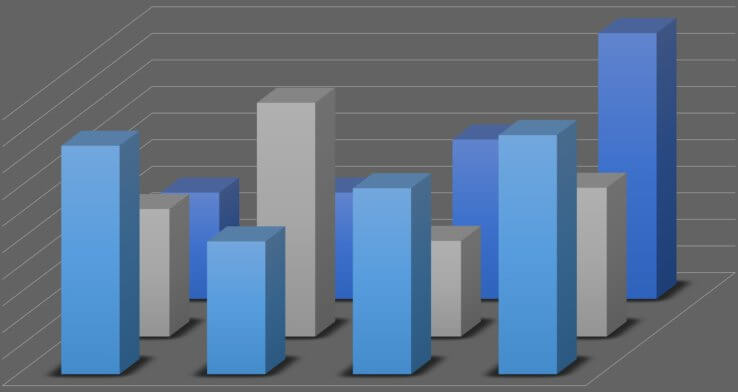Edvancer's Knowledge Hub
Predictive vs Descriptive vs Diagnostic Analytics

There are three main categories when it comes to data analytics: predictive, diagnostic, and descriptive. Every category is distinct in the value it offers and in how it could be used in business to advance productivity and revenue. It is crucial to understand each category and know the right timing for using a category.
Predictive analytics
In predictive analytics, we need to make sense of why certain things happened and then build a model to project what could happen in the future, hence the name. The predictions could be in the micro-level such as in:
“There’s a 60% probability that our biggest supplier in the East coast will partner with our competitor next year”
It could also be on a macro-level approach such as in:
“Revenue in the Eastern coast will likely to increase by 6% to 9% in the next year.”
Predictive analysis can be remarkably beneficial for businesses as it can serve as a guide in making their operations more efficient by cutting down on the costs. The process can also make certain that businesses could preserve the resources needed to take advantage of future opportunities.
More micro-level forecasts like customer-level estimates of returns could be used to determine which resources should be prioritized and build support strategies with integrated sales and customer support.
For instance, a B2B business who is working with several clients in a certain industry may largely depend on their individual relationship with each customer.
The business can work with each client to create models, which can forecast which client has the highest intention to build the business again. Equipped with this data, the business could better assign their resources to the most important clients and those with the highest potential for retention.
But studies reveal that most businesses depend predominantly on descriptive analytics, which we will discuss next.
Descriptive Analytics
As the name suggests, descriptive analytics are more about summarizing and reporting data. This type of data analytics is geared towards what is currently happening or what has already happened. A sample data set extracted through descriptive analytics include “top 10 customer service representatives in terms of processed requests for the month of July in Asia.” Businesses can use descriptive analytics, especially those that are just initiating analytics of various data produced internally.
For example, one company discovered that they have spent about $10 million per year on different sales training programs. The outcome of the descriptive analytics was a mere summary of the expenditures, but still, it was useful because they learned an important data about their spending on sales training. They may not have yet the data to determine which program provides the highest ROI, but they can implement a plan to analyze which programs must be dropped and which must be duplicated and expanded to maximize revenue.
Diagnostic Analytics
In contrast to descriptive analytics, diagnostic analytics is less focused on what has occurred but rather focused on why something happened. In general, these analytics are looking on the processes and causes, instead of the result. Here is an example diagnostic analytics “Revenue is up in the East coast and the likely reason is the increase in investment on targeted marketing approach, closure of a major competitor in the area.”
Take note that descriptive analytics cannot provide an answer to important questions such as “How can we avoid this problem” or “How can we duplicate this solution?” These are covered by diagnostic analytics. One application of diagnostic analytics is in the field of sports. For instance, in the Major League, many teams have ditched away from assessing the pitchers on the number of runs they allow.
Based on gathered data, the rate that the pitchers allow runs (result) are more likely to be less consistent compared to their rate of strikeouts and walks (process). As a matter of fact, the runs for the current year are less closely related with the runs allowed last year compared to the strikeouts and walks last year. Successful baseball teams are now focusing on the process instead of the outcome, so they can better assess the talent of the pitchers and determine which team they should trade or acquire.
It may cost about $6 million to $8 million to sign up a free-agent pitcher, so understanding whether his performance was really caused by his skills can be helpful for league teams.
Share this on





Follow us on




Manu Jeevan
Manu Jeevan is a self-taught data scientist and loves to explain data science concepts in simple terms. You can connect with him on LinkedIn, or email him at manu@bigdataexaminer.com.
Latest posts by Manu Jeevan (see all)
- Python IDEs for Data Science: Top 5 - January 19, 2019
- The 5 exciting machine learning, data science and big data trends for 2019 - January 19, 2019
- A/B Testing Made Simple – Part 2 - October 30, 2018
Follow us on
Free Data Science & AI Starter Course

